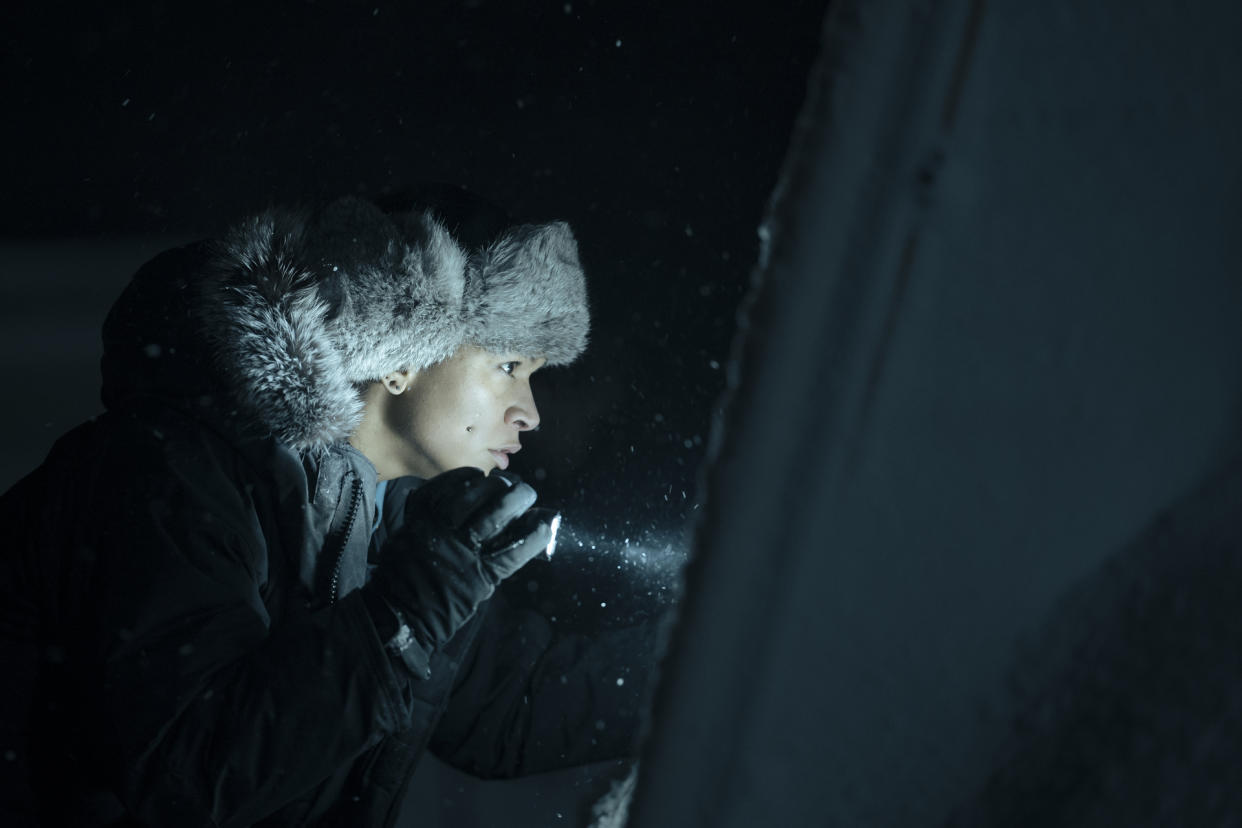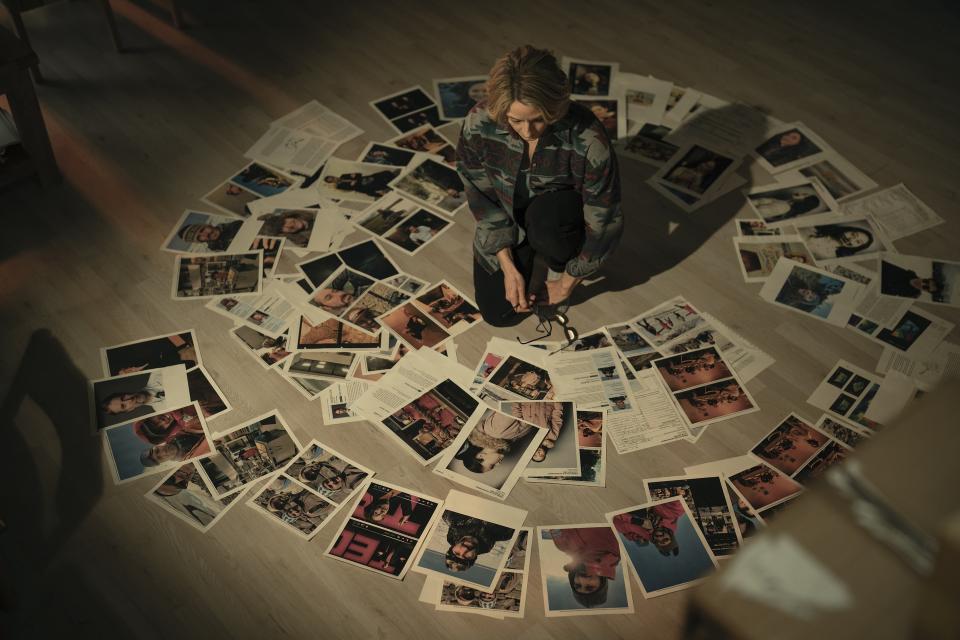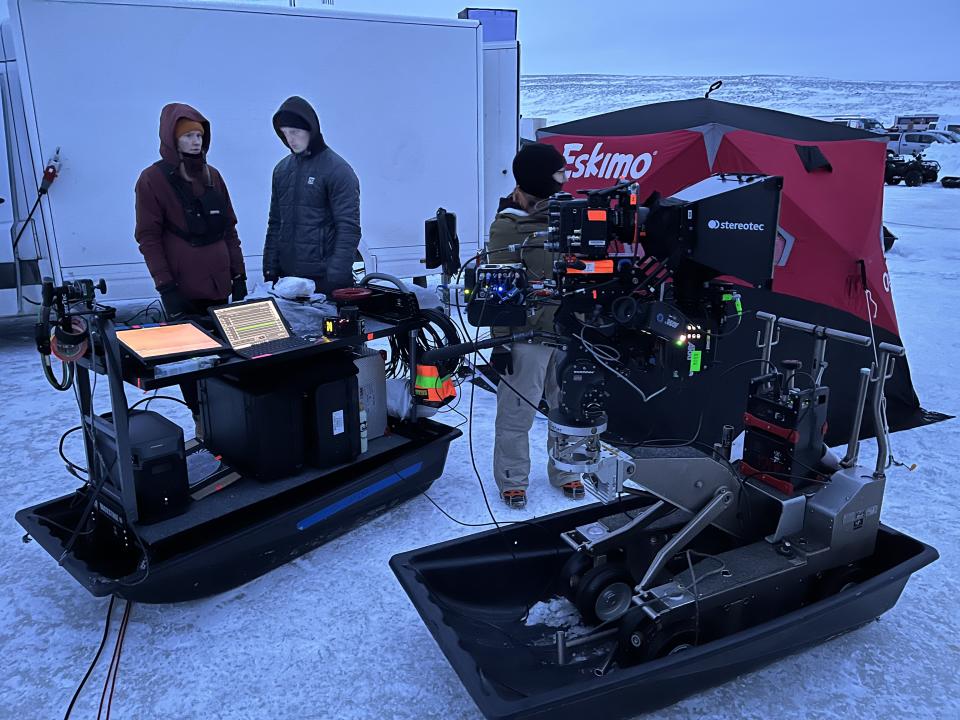The Light in ‘True Detective: Night Country’ Only Makes the Darkness Surrounding Ennis Even Inkier

Things get weird at the edge of the world. That’s true of the murder cases Detective Evangeline Navarro (Kali Reis) and Liz Danvers (Jodie Foster) are attempting to solve up in Ennis, Alaska, and it’s true of the challenges cinematographer Florian Hoffmeister had to face shooting “True Detective: Night Country.” As conceived by showrunner Issa López, the fourth season doesn’t tangle just the limbs of the researchers found frozen into a corpsicle.
Woven throughout the series are multiple lines of tension, between the mining town and the indigenous community, between human settlement and the natural world, between the routines of a crime-solving procedural and a more profound, supernatural dread. Hoffmeister needed to sculpt a look that would serve all of these threads while creating an overall visual tone. The key for the “True Detective” cinematographer wasn’t to think about the darkness but about the light.
More from IndieWire
With Its Oscar Nomination, 'Godzilla Minus One' Brings Takashi Yamazaki into an Exclusive Club
Dakota Johnson Reflects on Her Short 'The Office' Stint: 'The Worst Time of My Life'
Hoffmeister researched communities at the edge of the world and lived it himself as the “True Detective: Night Country” production shot in Iceland. He found that a natural human hunger for as much artificial light as possible indoors when the outside world was so uniformly dark for so long. “If I’m in my apartment in Berlin, I keep [my lighting] quite moody. But if you spend the winter in Iceland, I caught myself switching on every light that I had,” Hoffmeister told IndieWire. “You almost consciously make an effort to distinguish between day and night by creating your own day and night.”
Hoffmeister was also influenced by Russian photographer Alexander Gronsky, whose compositions dramatize that clash of dark and light, as well as the eerie space where the two meet. Hoffmeister thought about the extreme contrast between harsh, utilitarian light and overwhelming night as not just visual but sonic forces that his camera would bring out. “I thought that the highlights [of all the artificial lighting] should be like a guitar — and a guitar almost like screaming,” Hoffmeister said. He wanted the sharpness of the light inside the buildings of Ennis to feel shrill and abrasive and yet terribly necessary. “You get the subconscious feeling that if you switch this [light] off, you might just die,” Hoffmeister said.

The “True Detective: Night Country” DP saw this as a visual way to dramatize the alienation that the man-made environments create from nature as well as the oppressive, supernatural power of the natural world looming over everything. Moments of connection, like the birthing scene at the beginning of Episode 3, achieve a delicate blending of cool and artificially bright. But Hoffmeister also had to find a balance. “It’s very easy to say, ‘Make it bright,’ but when you do that practically, it just looks ugly on film. So we spent a lot of time testing to find that sweet spot,” Hoffmeister said.

The key for Hoffmeister was something that sounds pretty basic but that other HBO shows, which will remain unnamed, haven’t always pulled off: making sure that the actors’ faces were always legible. “It is quite en vogue to go moody now because the technology allows us to,” Hoffmeister said. “The technology of broadcast, an iPad has an amazing contrast ratio, HDR, all of this leads us oftentimes to embrace the atmospheric as cinematographers. But I wanted to not just create a moody room in which dark silhouettes communicate [the story], but I wanted to get the light into the faces.”
More than having light (and a little bit of screaming guitar) in the faces of the actors as they confront the shocking string of murders, though, Hoffmeister felt that some visual legibility was essential to the story. “We had these three different elements of storytelling: the supernatural, the disconnect and the soul [of this community], and the police work. There’s multiple emotional elements happening in each scene, oftentimes,” Hoffmeister said. “We had to find a way to [light the show] that would make the performances accessible in an emotional way without sacrificing the atmosphere of the image.”

The key to finding that balance was an extensive testing period, but even with time, Hoffmeister and his team couldn’t prepare for the Icelandic winter until they were in it. Testing in the summertime, when it’s sunny until almost midnight, is the exact opposite proposition from both the premise of “True Detective: Night Country” and its production realities.
“The only way we could ever shoot a camera test involving real snow was on top of a glacier at 11:30 at night. So we actually took a camera and some stand-ins onto a glacier, which is a proper hostile environment. And we were hit by a storm,” Hoffmeister said. “We could hardly put up a camera. And then it got dark at 11:30, and I literally had 30 minutes to shoot something because the production [told us] to evacuate the glacier and go down.”

After weathering the challenges of weather and crafting the right contrast, Hoffmeister wanted to add a level of variability that also serves the multiple layers of drama in “True Detective: Night Country.” Hoffmeister establishes a clear visual grammar for Ennis once it’s swallowed by night, but increases the level of darkness like a musical crescendo as the series progresses. As the detectives visit Tsalal Station multiple times, Hoffmeister delighted in tweaking the level of darkness and flickering light within the station to increase the sense of supernatural dread.
“One of my things that I really enjoy in my work is to give places a slightly different atmosphere. I rarely see light the same way twice,” Hoffmeister said. “And when you are in a place that you control, like on a film stage, [I have to remind] myself so that I try to change things subtly to just give it a sense of it being alive.”
Of course, as Vangie and Liz continue their investigation in “True Detective: Night Country,” there may be worse things than being alive out there in the dark.
“True Detective: Night Country” airs Sundays on HBO.
Best of IndieWire
Where to Watch This Week's New Movies, Including 'Argylle' and 'How to Have Sex'
Christopher Nolan's Favorite Movies: 40 Films the Director Wants You to See
Sign up for Indiewire's Newsletter. For the latest news, follow us on Facebook, Twitter, and Instagram.


